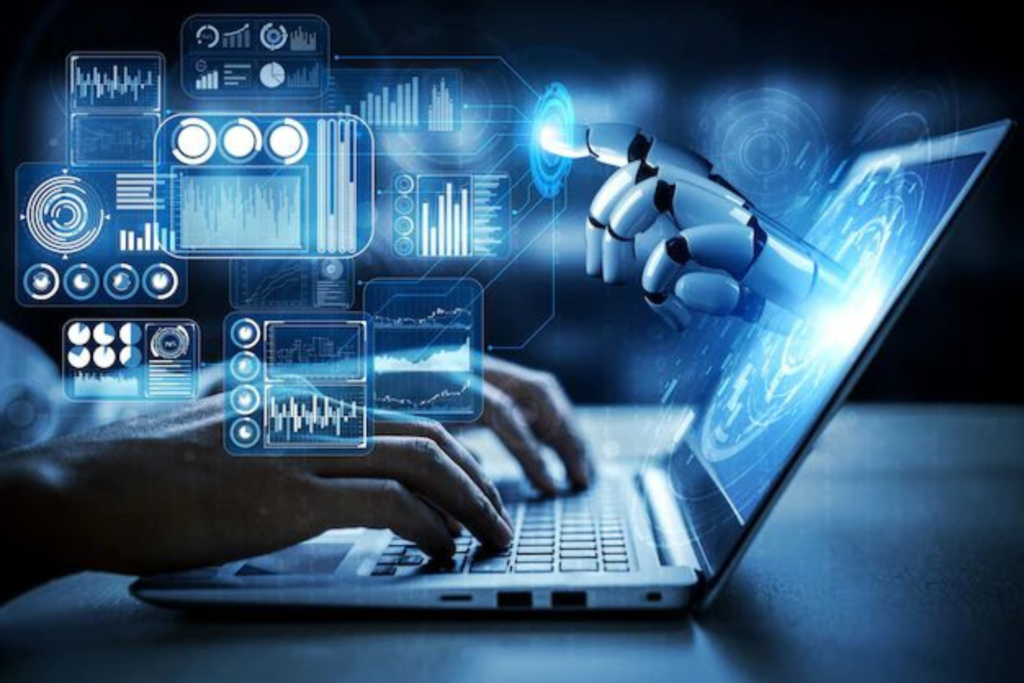Artificial Intelligence in Cybersecurity continues to gain higher significance as it shaped to counter advanced online threats. It shows that innovative technology is enabling specialists to analyze and better prevent, identify, and mitigate cyber threats. it defends are being made less reactive through data and analytics, allowing organizations in the digital space to prevent new threats and attacks at the core while continuing to have strong security measures in place.
The Evolution of Cybersecurity and the Role of AI-Driven Threat Detection in Modern Security
Digital environments grow more each day, and so do our concerns and adversaries regarding it, which only grows more complex. The applicability of Artificial Intelligence in Cybersecurity is changing how these risks are dealt with and the way they are detected much more accurately. In simple terms, AI cyber security enables the early detection of such events, and hence business and other organizations can contain or control these events at much earlier stages than a traditional security system, a feature that warrants the protection of information.
This continues beyond static models of threat detection, which provides multiple layers of security. With identification of unusual activities, Artificial Intelligence is able to shield an organization against breaches before they occur. It is this transition towards incorporating AI in cybersecurity that is redefining the way organizations protect their systems from risk, helping organizations prepare for the newer threats that result from the continually evolving threats of today.
Enhancing Cybersecurity with Predictive Analytics, Machine Learning, and Automated Response
Artificial Intelligence in Cybersecurity is increasingly imitating predictive analytics as the tool helps the security to deter threats as they form. Security tools can predict possible threats based on the historical data and trends and hence provide security a proactive opportunity. This strategy is one of the foundations of Artificial Intelligence for Cybersecurity, as it improves the overall chance of timely prevention and improved cybersecurity than before.
Thus, machine learning is used in cybersecurity to define what is and is not considered typical of the organization’s activity to identify threats. Through these AI models, various security tools can see discrepancies which alerts security officials of possible security threats early enough. In cybersecurity, machine learning helps the systems to learn and make adjustments that make the efforts of security Corp in protecting the digital environments much accurate.
Cyber security threat automation lowers the chances of relying solely on human input when handling the threats. Redefining Security tools that are fitted with auto remedial measures would help security personnel to alert and handle such occurrences reducing the damage as much as possible.

Proactive Defense and Automated Response: Strengthening Cybersecurity with Predictive Analytics and Machine Learning
Large organizations employ predictive analytics in that it shows security analysts the possible risks derived from analysis of patterns and trends in the data. Exploring these patterns of behavior can help organisations introduce a series of preventive measures which go beyond the field of IT security. AI for Cybersecurity makes this work even better to get more threats analyzed and contained faster, putting cybersecurity analysts in a much better position in defending an organization’s IT infrastructure
Machine learning techniques thus enable a system to detect an anomaly other than having to rely on the intelligence of a human being. With reference to the previous attacks, AI is increasingly being utilised in order to minimize human interaction with the security measure, while handling cyber threats directly from their roots. Despite the increased threat volume,
Navigating AI Integration in Cybersecurity: Challenges, Real-World Applications, and Future Prospects
Incorporation of AI in cyberspace leads to many impacts such as challenge in handling data and responsible use of Artificial Intelligencein Cybersecurity. These risks have to be counteracted so that the adversaries cannot exploit it with its applications for AI. Improved threats information means that real susceptibilities are evident; sound protection procedures are necessary to shield AI-blanket from malicious wares penetrations by clever threats.
Examples in the real world depict how it is possible to apply AI in the identification and thrashing of threats in quick succession. This paper underscores how analyzing case studies allows cybersecurity professionals to identify how use of AI can effectively be applied to enhance segment protection. For instance, the integration of AI in security services has increased detection efficiency and quickness in solving crimes, as example of positive impact of AI integration in the processes.
As for future development, great expectation can be expected from AI in cybersecurity since further developments provide even greater accuracy and tunability. Over the years AI in the technology sector is set to advance in delivering higher threat intelligence and increased automation of processes as concern to strategy the executive-level goals of cybersecurity professionals. The above evolution raises the prospect of a future where AI has a critical function to perform in the development of sound, progressive cybersecurity paradigms.


